Digital Privacy in Remote Education: Key Security Tips
Safeguarding Digital Classrooms: Navigating the Privacy and Security Landscape in Remote Education
The rapid shift to online education has created unprecedented challenges for students, parents, and educators alike. With virtual classrooms becoming the new norm, concerns about digital privacy and security have moved to the forefront of educational discussions.
Understanding the Digital Privacy Landscape
When children log into virtual classrooms, they generate data footprints that may be collected, stored, and potentially shared. Many platforms utilized for remote instruction weren't originally designed with younger users in mind, creating significant privacy gaps. Educational institutions often face difficult choices between accessibility, cost, and privacy protection.
The privacy concerns extend beyond just data collection to include:
• Unauthorized access to personal information
• Commercial exploitation of student data, particularly with "free" services
• Inadequate consent mechanisms for recording sessions
• Cross-platform tracking of student activities
• Educational technology often lacking robust security infrastructure
Network Vulnerabilities in the Virtual Classroom
The security of home networks has become critically important as they now serve as extensions of school infrastructure. While most residential connections offer basic protection, not all students have access to secure networks. Some may connect from public Wi-Fi or shared networks that present significant security vulnerabilities.
Beyond technical vulnerabilities, there are practical concerns about the home learning environment. Family members may inadvertently overhear confidential discussions, and the boundaries between educational and personal spaces have blurred considerably.
Unauthorized Recording and Distribution Risks
A particularly troubling aspect of online education involves unauthorized recording. Without proper safeguards, anyone can capture screenshots or record sessions without permission. These materials might then be shared inappropriately or manipulated, creating potential for harassment or privacy violations.
Empowering Families Through Proactive Measures
Despite these challenges, parents and students can take concrete steps to enhance their privacy protection:
Conduct Privacy Audits
Examine the tools and platforms your school employs. Request detailed information about data practices, retention policies, and third-party sharing arrangements. Educational institutions should be transparent about their vetting processes for digital tools.
Implement Technical Safeguards
• Configure privacy settings on all learning platforms
• Use updated antivirus and security software
• Consider using a VPN for encrypted connections
• Create strong, unique passwords for educational accounts
• Disable unnecessary permissions on learning applications
Establish Clear Boundaries
Create dedicated learning spaces that minimize private information visible during video sessions. Discuss appropriate online behavior and the importance of respecting others' privacy in virtual environments.
Understanding Legal Protections
Several regulatory frameworks offer protection for student privacy:
• FERPA governs educational records and requires parental consent for disclosure
• COPPA regulates data collection from children under 13
• Various state laws provide additional protections specific to educational technology
The Future of Privacy in Digital Education
As online learning becomes more integrated into educational systems, we must advocate for privacy-by-design approaches in educational technology. This means building privacy protections into platforms from the ground up rather than adding them as afterthoughts.
The responsibility for protecting student privacy must be shared among technology providers, educational institutions, policymakers, parents, and students themselves. Through collaborative efforts, we can create learning environments that are both effective and respectful of fundamental privacy rights.
Why People Need VPN Services to Unblock Porn
Why People Need VPN Services to unblock porn, many people use VPNs to hide their real location, secure their connection, and avoid ISP or network blocks so they can access adult sites without exposing personal data or suffering reduced speeds. Porn unblocked refers to adult content made reachable despite regional or network restrictions, and tools that unblock porn typically achieve this by routing traffic through servers in areas where such content is allowed.
Why Choose SafeShell VPN to Access Adult Content
For those seeking to unblock porn sites and access region-restricted adult content, SafeShell VPN offers an optimal solution with distinct advantages:
- Blazing-fast connection speeds eliminate buffering for uninterrupted HD streaming, ensuring seamless viewing without quality compromises.
- Innovative App Mode technology bypasses geographical barriers by simultaneously unlocking multiple regional content libraries, enabling instant access to diverse pornographic material without manual server changes.
- Military-grade encryption through proprietary protocols shields your activities from ISP monitoring, network administrators, and sophisticated tracking systems, maintaining absolute privacy.
- Comprehensive multi-device compatibility protects up to five gadgets concurrently across all major platforms—from smartphones to smart TVs—ensuring consistent access on every screen.
How to Use SafeShell VPN to Unlock Porn Sites
Accessing region-restricted content is simple with SafeShell VPN, which allows you to browse privately while appearing to be in different locations around the world. Here's how to use this service effectively:
- First, create an account on the SafeShell VPN website and select a subscription plan that matches your needs
- Download the SafeShell VPN application onto your device from the official website or your device's app store
- Install the application by following the on-screen prompts and launch it once installation is complete
- Log in using your SafeShell VPN credentials to access the dashboard
- Navigate to the server selection menu and choose a server in the region where your desired content is available
- Connect to your selected server and wait for confirmation that your connection is secure
- Open your preferred browser and navigate to the websites you wish to access, which will now recognize you as browsing from your selected region
- Vibnix Blog
- Politics
- News
- Liberia News
- Entertainment
- Technology
- Educação
- Art
- Causes
- Crafts
- Dance
- Drinks
- Film
- Fitness
- Food
- Jogos
- Gardening
- Health
- Início
- Literature
- Music
- Networking
- Outro
- Party
- Religion
- Shopping
- Sports
- Theater
- Wellness



